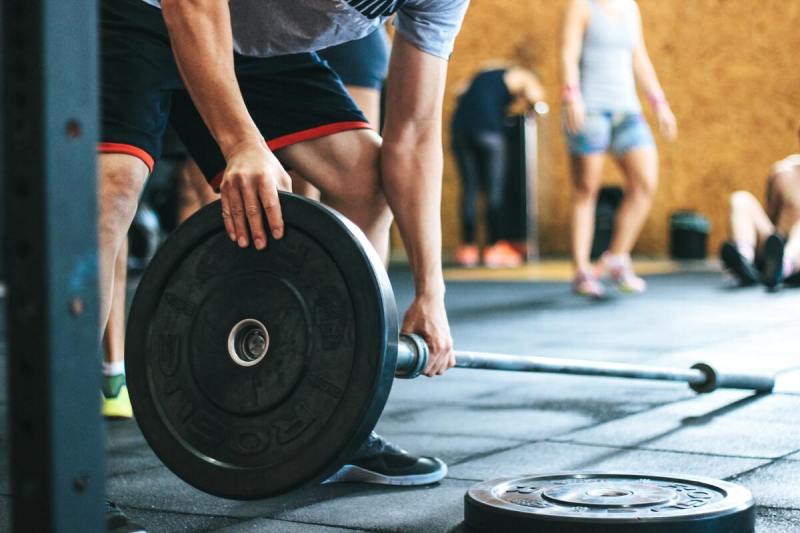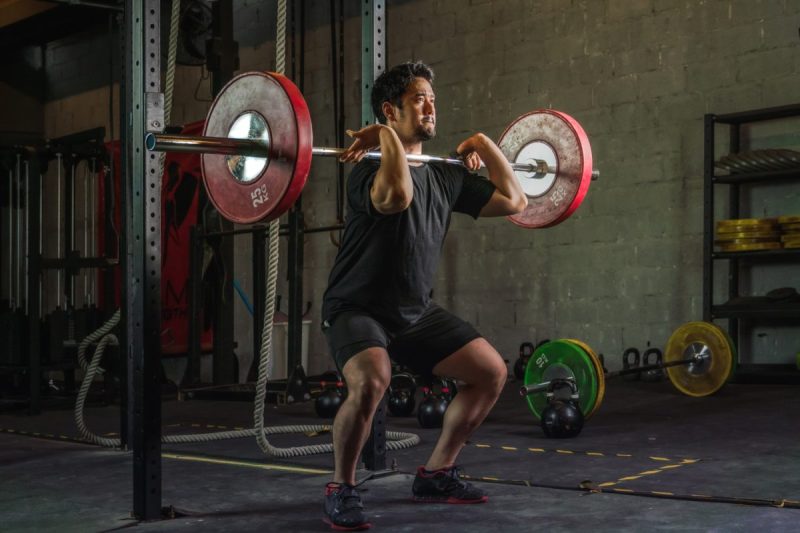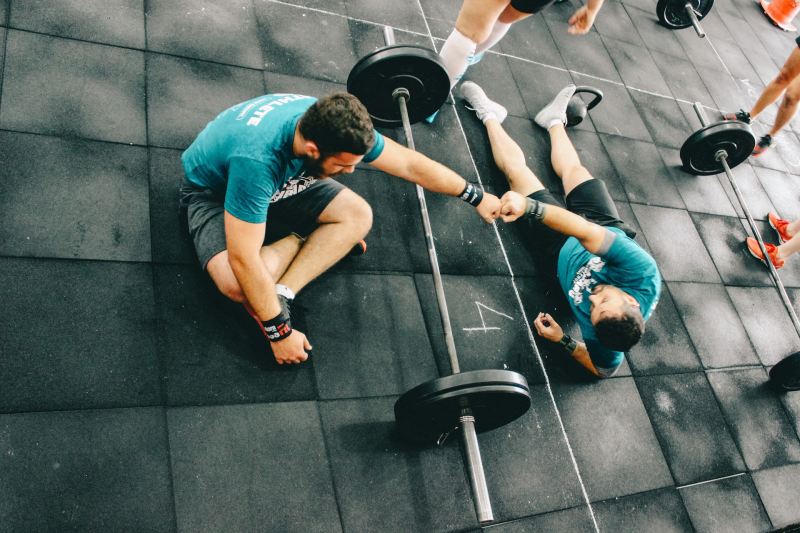
Barbell workouts are an excellent way to build strength and enhance overall fitness. Working out with a barbell offers numerous advantages. A barbell allows you to perform compound exercises that engage multiple muscle groups simultaneously, but it also provides flexibility, enabling you to continuously up the weight for further growth. Using a barbell is a time-efficient approach, which is especially important in the busy summer months. More than that, it’s just as useful for all experience levels, from beginner to advanced.
Using a variety of barbell exercises, you can train your legs, back, chest, shoulders, and arms in a single session. This comprehensive workout routine will help you develop functional strength, increase muscle mass, improve body composition, and enhance overall fitness levels. Not sure how to do it? We’ve got a complete full-body barbell workout that targets major muscle groups and maximizes your training efficiency.

Can you do a workout with just one barbell?
One of the great advantages of using a barbell for your workouts is its versatility. With just a single barbell and some weight plates, you can get a challenging, full-body workout that targets various muscle groups.
You can also easily change the intensity of each exercise to suit your level using the weight plates. This flexibility makes a barbell an ideal tool for both beginners and advanced lifters. Just make sure, if you’re working out at a gym, to follow gym etiquette around the barbell rack.

Benefits of full-body workouts
Increased muscle activation
Full-body workouts engage multiple muscle groups simultaneously, leading to better muscle activation and overall strength gains. This efficient approach allows you to work multiple muscles in less time.
Improved functional strength
Full-body workouts mirror natural movement patterns and enhance your ability to perform daily activities with ease. By engaging various muscle groups together the way they would be used in normal life, you develop functional strength that translates into real-world activities.
Enhanced caloric burn
Full-body workouts provide a high-intensity training stimulus, leading to increased calorie expenditure during and after the workout. This can be beneficial for individuals aiming to lose weight or improve body composition.

How often should you train full body?
To optimize results, aim to train your full body with the barbell workout routine two to three times per week. Allow at least one day of rest between each session to facilitate muscle recovery and growth. Remember, recovery is an essential component of any successful training program.
Make sure to follow proper weight training techniques and guidelines for safety: Learn the proper form and use it; don’t overdo it on the weight; warm up and cool down; and take a day or two in between sessions.

Complete full-body barbell workout
1. Barbell back squat
The barbell back squat is a compound exercise that primarily targets the muscles of the lower body, including the quadriceps, hamstrings, and glutes. It also engages the core and provides stability to the entire body. Plus, it allows you to skip the Smith machine.
Instructions:
- Start by placing the barbell on your upper back, resting it across your traps.
- Stand with your feet shoulder-width apart and toes slightly pointed outward.
- Lower your body by bending at the knees and hips, keeping your chest up and back straight.
- Descend until your thighs are parallel to the ground or slightly below.
- Drive through your heels to return to the starting position.
- Perform 3-4 sets of 8-12 reps.
2. Conventional deadlift
The conventional deadlift is a fundamental exercise that targets the posterior chain, including the hamstrings, glutes, and lower back. It also engages the core and forearms.
Instructions:
- Stand with your feet hip-width apart and the barbell on the floor in front of you.
- Bend at the hips and knees while maintaining a neutral spine, and grip the bar slightly wider than shoulder-width.
- With your chest up and back flat, drive through your heels and stand up, extending your hips and knees.
- Lower the barbell back to the floor by reversing the movement pattern.
- Perform 3-4 sets of 6-8 reps.
3. Military press
The military press primarily targets the shoulders, specifically the deltoids. It also engages the triceps and core muscles.
Instructions:
- Start by standing with your feet shoulder-width apart, holding the barbell at shoulder height with an overhand grip.
- Press the barbell overhead by extending your arms while keeping your core engaged.
- Lower the barbell back to shoulder height with control.
- Perform 3-4 sets of 8-10 reps.
4. Bench press
The bench press is a classic exercise that primarily targets the chest muscles (pectoralis major and minor) along with the triceps and shoulders. It’s one of the best tricep exercises.
Instructions:
- Lie on a flat bench with your feet flat on the floor and your eyes directly under the barbell.
- Grip the barbell slightly wider than shoulder-width, unrack it, and bend your elbows to lower it to your chest.
- Push the barbell back up to the starting position, fully extending your arms.
- Perform 3-4 sets of 8-12 reps.
5. Good mornings
Good mornings target the posterior chain, including the hamstrings, glutes, and lower back. This exercise improves hip mobility and strengthens the back muscles.
Instructions:
- Start by placing the barbell across your upper back, similar to the barbell squat setup.
- Stand with your feet hip-width apart and knees slightly bent.
- Hinge forward at the hips, keeping your back straight, and lower your torso until it is nearly parallel to the floor.
- Engage your glutes and hamstrings to return to the starting position.
- Perform 3-4 sets of 8-12 reps.
6. Barbell bicep curls
Barbell bicep curls target the biceps, which are essential for arm strength and aesthetics. These are arguably the most popular out of all the barbell exercises (you’ve probably even seen them in cartoons).
Instructions:
- Stand with your feet shoulder-width apart and hold the barbell with an underhand grip, hands slightly wider than shoulder-width.
- Keep your upper arms stationary and curl the barbell toward your shoulders, contracting your biceps.
- Lower the barbell back to the starting position in a controlled manner.
- Perform 3-4 sets of 8-12 reps.



